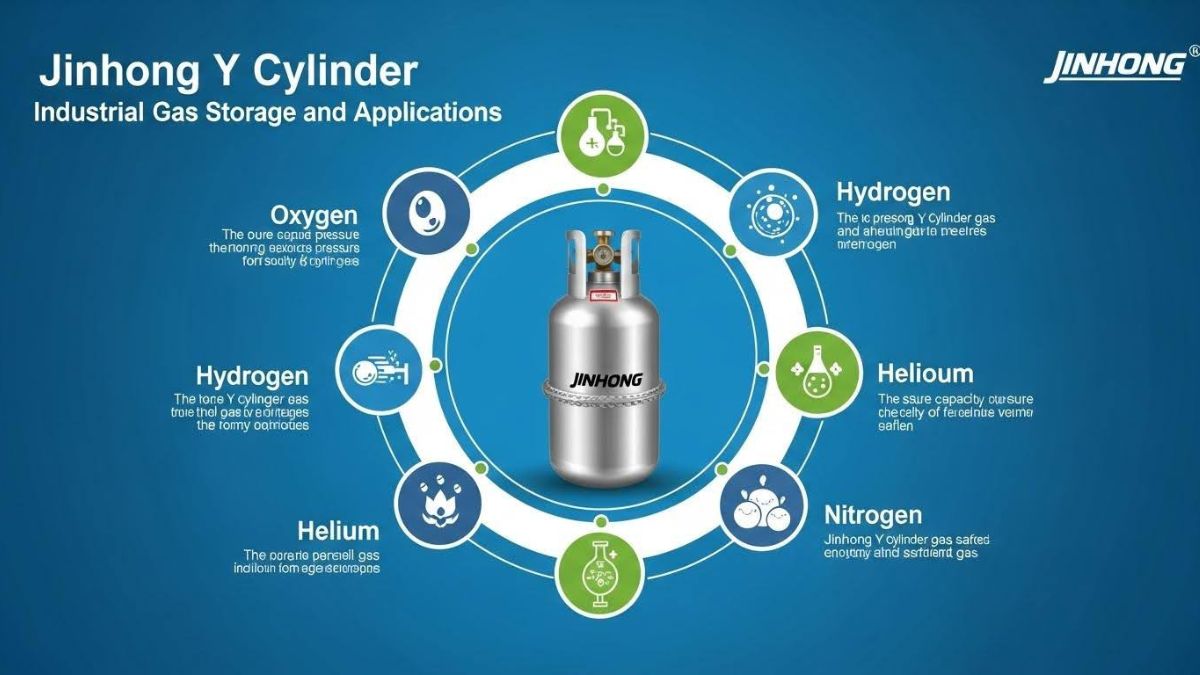TOPIC
Top 10 RV Winter Destinations: Where to Park Your RV for Snowy Adventures

As winter rolls in and the temperatures drop, many RV enthusiasts choose to hit the road in search of snow-covered landscapes and cozy destinations. If you’re ready to experience the beauty of winter from the comfort of your RV, there’s no better time to plan a winter getaway. Whether you’re chasing powder for skiing, exploring icy lakes, or simply soaking in the beauty of winter wonderlands, there are plenty of RV-friendly spots perfect for snowy adventures.
When planning your trip, it’s essential to ensure that your RV is ready for the colder months. Whether you’re looking for expert advice on RV maintenance or need the best RV services in Texas, places like Vogt RV are great starting points for ensuring your RV is prepared to handle the snow and cold.
With that in mind, let’s explore the top 10 winter RV destinations where you can park your vehicle and embrace the winter wonderland:
1. Jackson Hole, Wyoming
Known for its breathtaking mountain views and top-notch ski resorts, Jackson Hole is one of the best winter destinations for RV travelers. Located at the foot of the Teton Mountain Range, this charming town is a hub for winter sports like skiing, snowboarding, and snowshoeing. The nearby Grand Teton National Park offers stunning winter hiking trails and wildlife sightings. For RV campers, Gros Ventre Campground is open year-round and provides beautiful views, although it’s important to check weather conditions as winter storms can affect accessibility.
2. Lake Tahoe, California/Nevada
Lake Tahoe is a year-round destination, but winter adds a whole new layer of magic to the area. Known for its pristine snow and vast ski resorts like Heavenly Mountain Resort, Squaw Valley, and Northstar, Lake Tahoe offers something for every snow lover. There are several RV parks around the lake, including the Zephyr Cove RV Park, which offers direct access to winter activities. Whether you’re into skiing, snowboarding, or ice fishing, Lake Tahoe is a winter wonderland perfect for RV campers.
3. Breckenridge, Colorado
If you’re a fan of skiing or snowboarding, Breckenridge should be on your radar. This historic town in Colorado is famous for its world-class ski slopes, quaint downtown, and stunning mountain views. The nearby Tiger Run RV Resort offers full hook-ups and is located close to all the action, including Breckenridge Ski Resort. After a day on the slopes, you can unwind in the resort’s hot tub or explore Breckenridge’s festive winter charm. Breckenridge is also a great place to enjoy winter hiking, snowshoeing, and even snowmobiling.
4. Banff National Park, Alberta, Canada
For those who don’t mind crossing the border, Banff National Park is an iconic winter destination. Located in the heart of the Canadian Rockies, Banff transforms into a magical winter landscape with snow-capped mountains, frozen lakes, and wildlife sightings. There are several RV parks in the area, including the Tunnel Mountain Village, which remains open year-round. Banff is perfect for winter activities like skiing at the famous Lake Louise Ski Resort, ice skating on the lake, and relaxing in the Banff Upper Hot Springs.
5. Whitefish, Montana
Whitefish, located in northwest Montana, is an idyllic winter destination that provides the perfect balance of relaxation and adventure. The area is known for its charming small-town feel, stunning views of the Flathead Valley, and access to Whitefish Mountain Resort for skiing and snowboarding. The nearby Whitefish Lake offers opportunities for ice fishing, and the surrounding forest is great for snowshoeing and cross-country skiing. The Whitefish RV Park is open year-round and offers full amenities to make your winter stay comfortable.
6. Park City, Utah
Park City is a well-known winter destination with a rich history and a lively atmosphere. This charming town boasts two world-class ski resorts: Park City Mountain Resort and Deer Valley Resort. The area is perfect for skiing, snowboarding, and snowshoeing, with trails for all skill levels. The Park City RV Park is located within easy reach of the resort and offers convenient amenities for winter camping. After a day on the slopes, take a stroll through Park City’s historic Main Street and enjoy its lively après-ski scene.
7. The Great Smoky Mountains, Tennessee/North Carolina
For those who prefer milder winters without sacrificing the beauty of snow-covered landscapes, the Great Smoky Mountains is an ideal destination. With its sweeping views, winding mountain roads, and charming towns, this region is perfect for winter RV travel. You can stay at one of the nearby RV parks, such as the Elkmont Campground, and enjoy activities like winter hiking, wildlife viewing, and exploring the quiet, snow-dusted forests. The Great Smoky Mountains are a haven for anyone looking to enjoy the serenity of winter without the crowds.
8. Glacier National Park, Montana
Glacier National Park is a fantastic winter destination for adventurous RVers. While the park is primarily known for its summer hiking and stunning lakes, winter offers a whole different experience. The snow-covered mountains, frozen waterfalls, and quiet trails make it a peaceful retreat for those looking to enjoy the beauty of winter. The Apgar Campground is open year-round, and there are plenty of opportunities for cross-country skiing, snowshoeing, and wildlife watching. Make sure to check road closures and snow conditions before you go.
9. Lake Placid, New York
Lake Placid, located in the heart of the Adirondack Mountains, is a prime destination for winter sports enthusiasts. Known for hosting the Winter Olympics twice, this charming town offers incredible skiing and snowboarding opportunities at Whiteface Mountain, along with ice skating, bobsledding, and snowshoeing. The Lake Placid/Whiteface Mountain KOA provides year-round RV accommodations, making it an ideal place to park your RV during your winter adventure. Don’t forget to visit the Olympic sites and enjoy the festive holiday decorations in town.
10. Vail, Colorado
Vail is another world-renowned ski destination that deserves a spot on the list. With its expansive ski terrain and charming alpine village, Vail is the epitome of a winter wonderland. Whether you’re an expert skier or a first-timer, Vail has something for everyone. The Vail Valley is home to several RV parks, such as the Vail Campground, which offers convenient access to all the activities and amenities the area has to offer. After a day of skiing, you can enjoy shopping, dining, and the cozy après-ski scene in Vail Village.
Final Thoughts
Winter RV travel offers a unique way to experience the cold-weather charm of some of the most beautiful destinations in North America. From the snowy peaks of the Rocky Mountains to the serene beauty of national parks, these top 10 winter RV destinations offer something for every type of adventurer. Just make sure to prepare your RV for the winter conditions, whether it’s ensuring it’s properly insulated or securing the best RV services in Texas, like those at Vogt RV, to keep your vehicle running smoothly.
So, pack your bags, winterize your RV, and get ready for the snowy adventure of a lifetime!
TOPIC
Exploring the Jinhong Y Cylinder: Industrial Gas Storage and Applications

In industrial and laboratory environments, the need for reliable gas storage solutions is crucial. Among the many formats available, the Jinhong Y cylinder stands out as a high-capacity, high-pressure gas container designed for efficient storage and transport of specialty gases. With an emphasis on purity, performance, and safety, Y cylinders are trusted by industries ranging from semiconductors and laboratories to petrochemical plants and aerospace operations.
This article takes a deep dive into the design, specifications, applications, and advantages of the Jinhong Y cylinder, while also shedding light on the broader offerings of Jinhong, a global player in the specialty gas and cylinder market.
What Is a Y Cylinder?
A Y cylinder—sometimes referred to as a “ton container” or “T cylinder”—is a large, horizontal gas cylinder used to store and transport gases in bulk, especially under high pressure. These cylinders are ideal for gases that are either costly or consumed in large volumes, such as:
- Sulfur hexafluoride (SF₆)
- Silane (SiH₄)
- Ammonia (NH₃)
- Chlorine (Cl₂)
- Hydrogen chloride (HCl)
Y cylinders are constructed using high-strength steel or other reinforced materials and come equipped with pressure relief valves, gas-specific valve types, and neck threads tailored to the properties of the stored gas.
Dimensions and Specifications of Y Cylinders
Though specifications may vary slightly by manufacturer, Jinhong’s Y cylinders typically follow global standards for gas container design. Here are some standard specifications:
| Specification | Typical Value |
| Water Capacity | 49.5 – 52.5 liters |
| Working Pressure | Up to 150 bar (depending on gas) |
| Material | Seamless steel |
| Cylinder Orientation | Horizontal |
| Cylinder Weight | ~90 – 110 kg (empty) |
| Certification Standards | ISO9809, DOT, TPED, GB, etc. |
These cylinders are built to resist corrosion, handle hazardous contents, and ensure long-term durability under demanding industrial conditions.
Why Choose the Jinhong Y Cylinder?
Jinhong, a trusted name in the specialty gas industry, has a reputation for producing high-quality gas cylinders and supplying ultra-high purity gases to global markets. Their Y cylinders stand out due to the following reasons:
1. High Storage Capacity
Compared to standard industrial cylinders, Y cylinders provide significantly more gas per unit, reducing the frequency of cylinder changes and minimizing downtime.
2. Safety Compliance
Every Jinhong Y cylinder complies with international safety codes, ensuring that gases are safely stored and transported. From valve compatibility to explosion-proof construction, these cylinders are designed for handling toxic, corrosive, or flammable gases.
3. Versatility Across Industries
Whether it’s used in a semiconductor cleanroom or a chemical processing facility, the Y cylinder can handle diverse gases without compromising purity or safety.
4. Customization Options
Jinhong offers a range of customizable features for its Y cylinders, including:
- Valve type (Diaphragm, Ball, Needle)
- Gas purity levels
- Color-coded coatings
- Stamped serial numbers for traceability
Industrial Applications of Y Cylinders
Y cylinders are essential in sectors where gas consumption is high and continuous. Let’s explore their role across a few industries:
Semiconductor Industry
Gases like silane (SiH₄), ammonia (NH₃), and hydrogen chloride (HCl) are delivered in Y cylinders to semiconductor fabs. Their large volume capacity ensures consistent feedstock supply for chemical vapor deposition (CVD) and etching processes.
Chemical Manufacturing
In chemical synthesis and polymer production, bulk gases are used in continuous-flow reactors. Y cylinders reduce gas replacement frequency and ensure stable operations.
Power and Utilities
Sulfur hexafluoride (SF₆) is a common gas used for insulation in high-voltage switchgear. SF₆ is often stored in Y cylinders due to the quantity required for substations and grid systems.
Metallurgy and Welding
Some specialty gases used in high-end alloy processing and thermal spray coatings are stored in Y cylinders to maintain purity and minimize contamination risks.
Jinhong: Beyond Cylinders
Jinhong isn’t just a cylinder manufacturer—it’s a global supplier of industrial and specialty gases. From argon to acetylene, Jinhong provides gases for welding, medical, research, and semiconductor sectors.
Interested in pricing on one of Jinhong’s most popular gases? You can explore cost breakdowns for commonly used products like argon here: Jinhong
This pricing insight is helpful whether you’re sourcing gases in bulk or planning an industrial-scale project.
Maintenance and Safety Tips
Proper handling and maintenance of Y cylinders are essential to avoid hazardous situations:
- Store upright in well-ventilated areas
- Use regulators and fittings specific to the gas type
- Perform leak checks before each use
- Never attempt to refill or modify cylinders without professional certification
- Always follow SDS (Safety Data Sheet) instructions for each gas
Jinhong provides comprehensive safety documentation and training resources for all its products, including Y cylinders and the gases they carry.
Cost Considerations
While Y cylinders require a higher upfront cost compared to standard cylinders, they offer better cost-efficiency over time due to:
- Fewer cylinder changes
- Reduced shipping and handling
- Lower downtime in continuous processes
In bulk supply scenarios or semiconductor facilities, Y cylinders can lead to significant cost savings when calculated on a per-liter or per-gram gas usage basis.
Global Standards and Certification
Jinhong’s cylinders conform to key international standards, including:
- ISO 9809 for seamless steel cylinders
- DOT/TC certification for U.S. and Canadian markets
- TPED/ADR compliance for Europe
- GB standards for China
This makes them an ideal choice for companies operating in regulated industries and across global markets.
Conclusion
The Jinhong Y cylinder represents a critical innovation in industrial gas storage, offering bulk capacity, high-pressure tolerance, and unmatched safety. Whether you’re in semiconductor fabrication, chemical processing, or energy infrastructure, this cylinder format is built to support high-performance applications while ensuring operational efficiency.
Jinhong’s commitment to quality, global distribution, and innovation in specialty gases has made them a go-to supplier for businesses around the world. If you’re looking to invest in reliable, certified, and high-capacity gas storage, the Y cylinder may be exactly what your operation needs.
TOPIC
Can You File a Claim If Road Conditions Caused Your Motorcycle Crash?

Motorcycle crashes impact lives. When poor road conditions cause these accidents, you may wonder about filing a claim. Understanding your rights helps you make informed decisions. Bad roads, such as those with potholes or debris, present unique challenges for riders. These hazards can lead to devastating outcomes. You may think, “Who is responsible?” That’s a fair question. State or local governments often manage road upkeep. If they neglect maintenance, they might be accountable. But proving this requires evidence and expertise. Consulting experienced professionals is crucial. Groth Law Accident Injury Attorneys is a trusted resource in such situations. They guide you through the legal process. Gathering evidence, such as photos or witness testimonies, strengthens your case. Awareness of these steps can protect your future. You deserve justice when harmed due to someone else’s negligence. Understand your options. Knowledge empowers you to seek rightful compensation. Let’s uncover what action you can take.
Your Legal Rights and Responsibilities
When faced with a motorcycle crash caused by poor road conditions, knowing your rights is the first step toward resolution. Do you have a claim? Yes, if negligence on the part of road maintenance entities contributed to the crash. It’s critical to determine if the government is responsible for the road’s condition. Understanding regulations helps you establish a claim. For instance, Federal Highway Administration provides guidelines on road maintenance. Knowing these can help you understand where negligence occurred.
Proving Negligence in Motorcycle Crashes
To succeed in a claim, you must prove negligence. This involves showing that the responsible party knew or should have known about the hazard. Gathering evidence is essential. You need clear proof that links the road condition to your crash. Photos, reports, and witness statements play a vital role. Document everything, including the location, time, and specific conditions of the road. These details create a strong foundation for your claim.
Steps to File a Claim
Filing a claim involves several steps. First, report the accident to authorities. Accurate police reports can aid your case. Then, seek medical attention. Health records not only ensure your well-being but also serve as evidence of your injuries. Afterward, consult legal experts. They guide you through the intricate legal process. Experts can help you notify the responsible government entity of your intent to file a claim. It’s important to meet all legal deadlines, as missing them can jeopardize your case.
Understanding Liability
Determining liability in these cases can be complex. The table below outlines possible responsible parties and their typical maintenance duties:
| Responsible Party | Typical Maintenance Duties | When Liability May Apply |
| Local Governments | Maintain city streets | When city roads are neglected |
| State Governments | Maintain highways | When highways have hazards |
| Federal Agencies | Oversee federal routes | When federal routes are unsafe |
Importance of Expert Guidance
Expert guidance is invaluable. Legal professionals understand the nuances of such claims. They assess your situation and offer advice tailored to your needs. With their help, you can navigate the complexities of the legal system. This support can be a significant relief, ensuring your rights are protected.
Taking Action
Act promptly. Time matters in these cases. Evidence can disappear, and legal deadlines can pass quickly. By acting swiftly, you preserve your rights and enhance your chances of success. Stay informed and proactive throughout the process. Your diligence can make a substantial difference in the outcome.
Conclusion
Motorcycle crashes are life-altering events. When poor road conditions cause these incidents, you have the right to seek justice. Proving negligence requires careful documentation and expert assistance. By understanding your rights and taking informed steps, you can pursue rightful compensation. Remember, you are not alone. There are resources and professionals ready to guide you through this challenging time. Your well-being and future matter. Take control and act today.
TOPIC
A Kidnapping Private Detective Shares 8 of the Top Reasons Kidnappers Choose to Kidnap Others

Kidnapping is a terrifying crime that can happen to anyone. Children and adults are often targeted. It is necessary to communicate with private investigators in OKC and process servers near me who have worked on multiple kidnapping cases. Their knowledge about kidnapping cases reveals the top hidden reasons for kidnappers. These expert professionals play an important role in solving complex cases like this.
The top 8 reasons kidnappers choose to kidnap others and how process servers in OKC and private investigators in OKC help victims seek justice are explained in this blog.
1. Ransom Money
Money is seen as the most common reason behind kidnapping. Kidnappers often target those who belong to wealthy families and business backgrounds, so they can have a large amount of money from the victims’ families. Private investigators in Oklahoma City are experts in tracking them and getting in communication to work with law enforcement for victims.
2. Personal Revenge
Kidnappers often kidnap people for personal conflicts instead of money. In such cases, people take revenge on others. It can be a partner, close friend or even a colleague. A private investigator in OKC can collect evidence and uncover the truth for justice.
3. Custody Battles
Sometimes, one parent can kidnap their child because of a custody battle, and it is known as parental kidnapping. These situations can be complicated if parents take their child outside the state. In such a situation, private investigators in Oklahoma work closely with high authorities to track kidnappers and return the child safely.
4. Human Trafficking
Human trafficking has been a major issue in the U.S., including in Oklahoma. Traffickers kidnap individuals and force them into exploitation. Quick responses from a process server in Oklahoma City can make all the difference and avoid court cases.
5. Mental Illness or Delusion
Not every kidnapper has a logic behind kidnapping. Some kidnappers have mental illnesses, and they believe it is a way to earn money from people who do not belong to them. These cases are extremely difficult and cannot be solved without the help of investigators near me who can handle complex situations.
6. Jealousy or Obsession
People who are jealous and obsessed kidnap others to gain control over them. A skilled private investigator and process server in OKC works with law enforcement to protect victims and uncover the truth.
7. Coercion or Leverage
People often kidnap others to pressure them. For example, a criminal kidnaps a business owner to get assets from them. In such high-profile cases, a process server in OK delivers legal documents to deal with the kidnappers and support victims.
8. Random Opportunity or Mistake
Some kidnappings are not planned. Some happen due to mistaken identities. Process servers and private investigators in Oklahoma City can interview witnesses and help with identifying the suspect.
Conclusion
People often get upset and emotional when they face the kidnapping of their loved ones. In such a complicated situation, it is necessary to find private investigators in OKC and a process server in Oklahoma who have experience in solving complex cases. These professionals are familiar with Oklahoma laws and work efficiently to gather evidence.
If you are searching for private investigators and process servers near me, it means you have trust in them that their services are reliable and supportable for their clients who hire them. The right team can help you everywhere, whether it’s a court matter, a child custody battle or a kidnapping case.
-

 BLOG1 year ago
BLOG1 year agoATFBooru: A Hub for Animated Art and Community
-

 CONSTRUCTION12 months ago
CONSTRUCTION12 months agoBuilding a Home Gym in Your Basement (7 Key Renovation Tips)
-

 BLOG1 year ago
BLOG1 year agoFictionmania: A Deep Dive into the World of Transformative Stories
-

 GAMES1 year ago
GAMES1 year agoSnow Rider 3D: Unblocked Tips and Tricks for Gamers
-

 BLOG11 months ago
BLOG11 months agoGIFHQ: A Comprehensive Guide
-

 BLOG1 year ago
BLOG1 year agoVincent herbert new wife: A Detailed Overview
-

 BUSINESS1 year ago
BUSINESS1 year agoInvestiit.com Tips: A Comprehensive Guide for Smart Investing
-

 BLOG1 year ago
BLOG1 year agoWNFLB: A Deep Dive into Its Impact on Women’s Sports Introduction to the WNFLB
